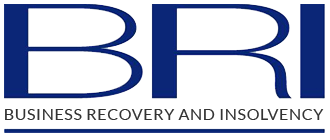At BRI Business Recovery and Insolvency, we provide formal professional advice to companies who are struggling financially. This includes tips and pointers to avoid using us formally, it can include assistance with restructuring the company, or to use our other formal insolvency services. Something we are often asked by our clients or where we find that there is confusion is with the terms insolvency vs bankruptcy. What is the difference between the two?
In this insight, we will discuss the differences between insolvency vs bankruptcy.
Definition of Insolvency
Insolvency is defined in the Insolvency Act (“IA”) 1986 under sections 123 IA 1986 for corporate entities (i.e. a limited company) and 268 IA 1986 for individuals.
In summary, insolvency is the inability of a corporate entity, business or an individual to pay their debts as and when they fall due.
In addition, for corporate entities, the second insolvency test is whether their assets are worth less than the value of their liabilities.
Definition of Bankruptcy
Bankruptcy is a formal insolvency process that is used by individuals (including sole traders) to deal with debt problems.
An individual can enter into bankruptcy by completing an application at gov.uk, and an individual can be forced into bankruptcy by a creditor (someone who is owed money). A creditor can present a bankruptcy petition against an individual if they are owed £5,000 or more.
Following the making of a bankruptcy order, a trustee in bankruptcy will be appointed to deal with the bankruptcy estate and an individual will:
- Need to surrender the majority of assets to the Official Receiver
- No longer have to deal with creditors.
- Be automatically discharged from bankruptcy within 12 months in most circumstances.
If you are considering bankruptcy, it is important to seek professional advice.
Insolvency Vs Bankruptcy and Limited Companies
Bankruptcy is not a process that can be used for limited companies.
The primary formal insolvency options available for limited companies struggling with debt are:
- Liquidation
- Company voluntary arrangements
- Administration
- Restructuring plan
- Moratorium
As with bankruptcy, a company can enter into a formal process voluntarily, but it can also be forced into certain processes by a creditor. The circumstances in which a limited entity can be forced into a process differ, so it is important to seek advice if a creditor has issued a formal demand for repayment or has threatened legal action.
Insolvency Vs Bankruptcy: Key Differences
To compare insolvency vs bankruptcy, here is a breakdown of the key differences.
- Insolvency is a financial state, while bankruptcy is a legal process.
- Insolvency does not necessarily involve a legal declaration or court process. Bankruptcy is a formal legal proceeding initiated by a debtor or creditor.
- Insolvency can be resolved through negotiations, restructuring, or other informal means. Bankruptcy involves legal intervention, often resulting in the loss of the debtor’s assets.
- Insolvency might be temporary and resolved without long-term consequences if managed properly. Bankruptcy usually has longer-term impacts on the debtor’s creditworthiness and financial standing.
Insolvency or Bankruptcy: How BRI can help
When you or your company is facing insolvency then dealing with debt and creditor pressure can be extremely difficult. If you do find yourself in a position where you are struggling with debt it is important to seek advice sooner rather than later.
If you would like further information regarding insolvency, bankruptcy or any of the options available for limited companies, please do not hesitate to contact a member of the team at BRI.
